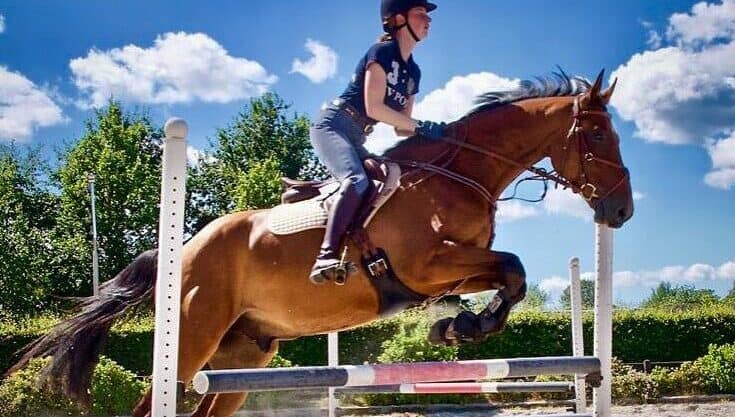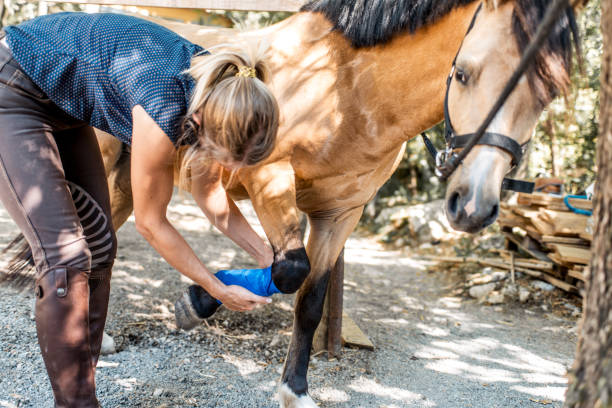What Horse is Good for Jumping? Jumping requires a unique combination of power, agility, and intelligence from a horse. Whether you’re a novice rider or an aspiring Olympian, selecting the right equine partner is crucial. This 1,500-word guide examines:
✅ Top breeds for jumping disciplines
✅ Conformation traits that predict success
✅ Temperament requirements
✅ Age and training considerations
✅ Budget expectations for competitive prospects
Backed by equine sports science and insights from Olympic trainers, we reveal how to find your perfect jumping partner.
1. The Biomechanics of a Great Jumping Horse
1.1 Ideal Conformation for Jumping
| Trait | Optimal Characteristics | Performance Impact |
|---|---|---|
| Withers | High, prominent | Better saddle stability |
| Back | Short, strong | Power transmission |
| Hindquarters | Muscular, sloping | Impulsion generation |
| Legs | Long forearms, short cannons | Shock absorption |
Veterinary Insight:
A 2023 study in Equine Veterinary Journal found horses with 62-65° shoulder angles have 23% better bascule (arc over jumps).
2. Top 5 Breeds for Jumping
2.1 Dutch Warmblood
- Success Rate: 38% of Olympic jumpers since 2000
- Key Traits:
✔ Powerful hindquarters
✔ Exceptional trainability
✔ Natural bascule
Best For: Ambitious competitors
Read More:- How Often Should a Dog Go To The Groomers?
2.2 Holsteiner
- Genetic Advantage: Centuries of selective jumping breeding
- Standout Feature: Incredible scope (ability to make big jumps)
Notable Example: Meteor – 3-time Olympic medalist
2.3 Irish Sport Horse
- Hybrid Vigor: Thoroughbred x Irish Draught
- All-Weather Ability: Jumps well on any footing
Budget Note: Often 30% cheaper than warmbloods
2.4 Selle Français
- French Powerhouse:
✔ Explosive take-off
✔ Quick reflexes - Temperament: More sensitive – best for experienced riders
2.5 Thoroughbred (Off-Track)

- Pros:
✔ Affordable
✔ Great cardiovascular endurance - Cons: May need retraining from racing
3. Age and Experience Considerations
3.1 Schoolmaster (12+ years)
✔ Ready to compete immediately
✔ Teaches rider technique
✔ Cost: $25,000-$100,000+
3.2 Young Prospect (4-7 years)
✔ Lower initial cost ($10,000-$30,000)
✔ Requires professional training
✔ Higher risk of undisclosed issues
3.3 Breeding Potential
- Mare: Can compete while breeding
- Stallion: Limited to professional handlers
4. Evaluating Potential Jumpers
4.1 Free Jumping Assessment
Look for:
✔ Natural bascule
✔ Careful front end
✔ Willingness to try
4.2 Veterinary Pre-Purchase Exam
Must-check items:
✔ Flexion tests
✔ X-rays of hocks/stifles
✔ Wind (respiratory) test
4.3 Pedigree Analysis
Look for these bloodlines:
- Dutch: Corland, Nimmerdor
- Holsteiner: Cassini, Contender
- French: Jarnac, Quidam de Revel
5. Training Progression
5.1 Foundation Years (4-6 years)
Focus on:
✔ Gymnastic grid work
✔ Cavaletti exercises
✔ Basic dressage
5.2 Competitive Development (7-10 years)
Introduce:
✔ Combination fences
✔ Derby bank complexes
✔ Water jumps
5.3 Maintenance Training (10+ years)
Prioritize:
✔ Joint health
✔ Course strategy
✔ Peak conditioning
6. Budget Breakdown
6.1 Price Ranges
| Level | Price Range | Expected Training |
|---|---|---|
| Beginner | $5,000-$15,000 | Schooled over 2’6″ |
| Amateur | $20,000-$50,000 | Consistent at 3′ |
| Professional | $75,000-$250,000 | 1.50m+ ready |
6.2 Hidden Costs
✔ Insurance ($1,500-$5,000/year)
✔ Competition fees ($5,000-$20,000/year)
✔ Veterinary maintenance ($3,000+/year)
7. Alternative Options
7.1 Lease-to-Own
✔ Test compatibility
✔ Apply lease fees to purchase
✔ Common for young horses
7.2 Importing from Europe
✔ Wider selection
✔ 15-20% cheaper than US prices
✔ Requires quarantine planning
Conclusion: Finding Your Perfect Match
The ideal jumping horse combines:
✅ Breed characteristics for power and scope
✅ Correct conformation for soundness
✅ Trainable temperament
✅ Appropriate experience level for your goals
Final Tip: Invest in a professional evaluation – the right horse is worth its weight in gold medals!
Read More:- How Often Should a Dog Go To The Groomers?



